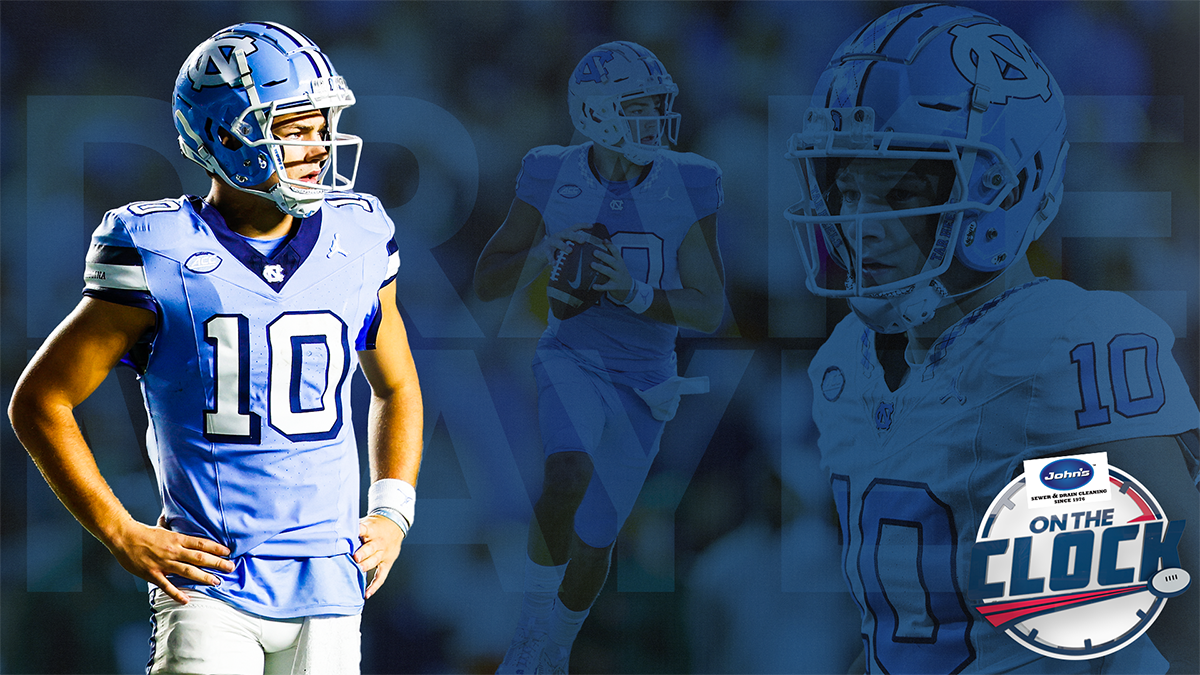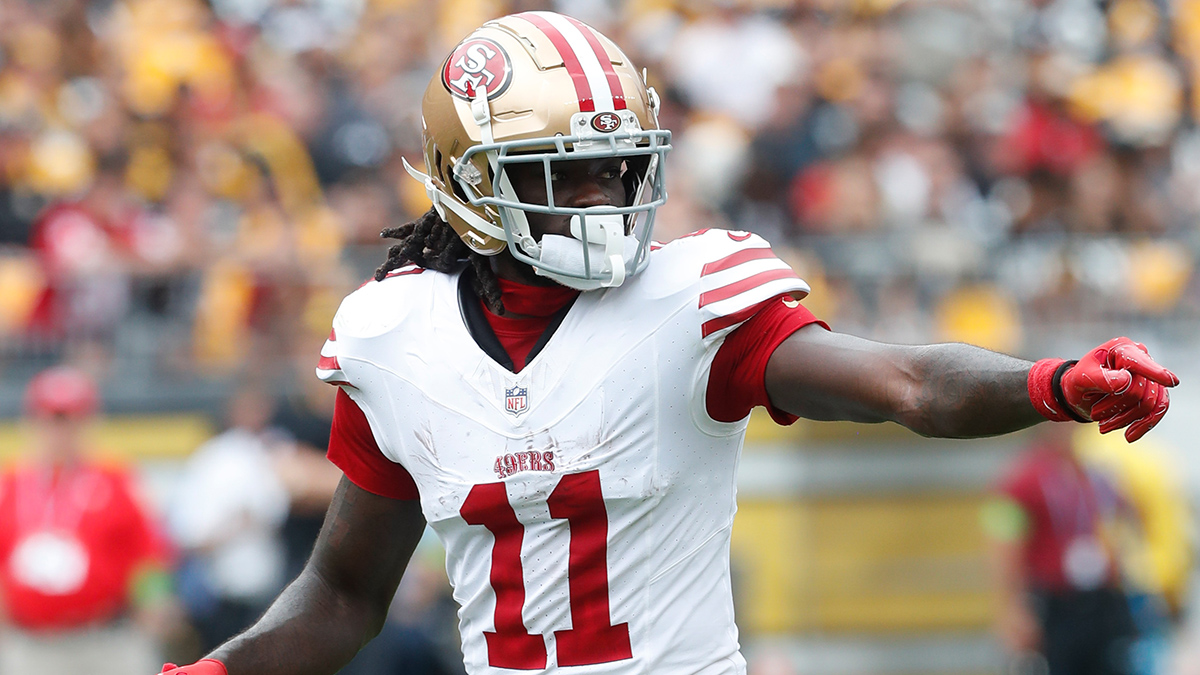When it comes to the NFL Draft, the cliche is that every pick is a gamble of sorts.
But the Patriots have taken on some real risk in selecting the players they did over the weekend because this was a draft class loaded with outliers for Bill Belichick. If it doesn't work out, it may halt some of the momentum built after a successful draft a year ago.
Speed over size
Stay in the game with the latest updates on your beloved Boston sports teams! Sign up here for our All Access Daily newsletter.
The Patriots made it their stated goal to get faster with this year's class, and they certainly did at a few positions.
Baylor's Tyquan Thornton has an argument as the fastest receiver in the class thanks to his 4.28-second 40. And South Dakota State's Pierre Strong Jr. clocked the fastest time for running backs at this year's combine with a 4.37-second 40. They added a burner in the third round in Houston corner Marcus Jones, and they selected a twitchy cover man in Arizona State's Jack Jones in the fourth.
But in getting faster, they also got smaller. Dramatically so in some cases.
At 6-foot-2, Thornton weighed just 181 pounds at the combine, which placed him in the 9th percentile for weight for receivers in recent combine history. His hands (8.25 inches) are also atypically small (2nd percentile).
New England Patriots
At corner, Marcus Jones measures in at just 5-foot-8 (1st percentile) and 175 pounds (2nd). Fourth-round corner Jack Jones -- who doesn't really check the straight-line speed box with a 4.50-second 40 -- was 5-foot-11 and 171 pounds (1st) in Indy earlier this offseason.
It comes as no surprise that the Patriots would be willing to sacrifice some size in favor of speed. But the frames of their second, third and fourth picks are representative of what could end up looking like an over-correction. There's a reason the vast majority of NFL players are heavier. Speed matters, but so does physicality.
Striking a balance between the two may have meant taking others on the board like Cincinnati receiver Alec Pierce (6-foot-3, 211 pounds; 4.41-second 40) over Thornton at No. 50 overall, and UTSA corner Tariq Woolen (6-foot-4, 205 pounds; 4.26-second 40) in the fourth over Jack Jones.
Brand name waiting game
This was also an outlier class in terms of the types of programs from which Belichick chose. There were four players taken from FCS or Division 2 schools -- Cole Strange of Chattanooga, Strong of South Dakota State, Bailey Zappe of Western Kentucky and Sam Roberts of Northwest Missouri State -- most of any Patriots draft class under Belichick.
Belichick often likes to rely on the SEC and prospects from Power 5 schools, with good reason. That approach worked wonders in 2021 as he came away with Mac Jones and Christian Barmore from Alabama, and Rhamondre Stevenson and Ronnie Perkins from Oklahoma with his first four picks. It was widely hailed as an excellent class. After one year, it looks like it's trending in that direction.
Yet this year's group has a decidedly different feel with the top-four picks coming from Chattanooga, Baylor, Houston and Arizona State. Two additional fourth-rounders came from South Dakota State and Western Kentucky.
No SEC, Big 10 or ACC players -- the three conferences with the most players in the NFL last year -- made their way to New England until the sixth round. It's the longest that Belichick has waited to add a player from one of those conferences since 2013, when he called Michael Buchanan of Illinois in the seventh.
That's not to say a core with smaller-program players can't work. Kyle Dugger of Division 2 Lenoir-Rhyne looks like a key piece of the Patriots defense moving forward. Malcolm Butler was a product of Division 2 West Alabama. But they're outliers.
Evaluators will tell you: "Don't scout the helmet." But it's not a coincidence that the vast majority of NFL talent comes from programs with household names. And it's unusual to see a Patriots draft class go light on those collegiate brands.
Gauging value
When it comes to determining whether or not a team maximized the value of its picks, there are a few ways of trying to go about it.
First, and most importantly, is how those who do this for a living within the NFL -- executives, scouts, coaches -- react to what they've seen. While Strange is widely viewed as being a promising player in league circles, his selection at No. 29 overall was deemed by multiple coaches and executives as a "reach" and the most surprising pick of the first round. For Thornton, league sources indicated that the Patriots may have reached even farther.
Another way of gauging value is by comparing selections against where they were projected to go by draft experts in the media world. It's worth noting because consensus opinion has actually proven to be relatively predictive of NFL performance for individual prospects. According to one study, consensus opinion over the last few years has been about as good as the league itself in that regard.
This year, The Athletic's Consensus Big Board ranked the Patriots last in Draft Capital Used Over Expected based on the players they chose and the public pre-draft ranking of those players. The Chiefs, Panthers and Ravens ranked at the opposite end of the spectrum in the top three.
Curran: The Patriots' draft decisions are taking a pummeling
What may have done further damage to the consensus view of the Patriots class are the positions they attacked. Grabbing a guard in the first round, two running backs, a slot corner (maybe two) and what appears to be a long-term backup quarterback could have hurt the assessment of how their draft capital was expended. Outside of Thornton's selection in the second round, it's hard to project the championship needle moving much in New England with this class even if some of these picks are eventually deemed "hits."
Grade is in
Based on the differing opinions between the Patriots and the media consensus, it's to be expected that the grades for the Patriots draft (handed out by those in the media) would not be pretty. According to 18 expert grades compiled by Rene Bugner, the Patriots carried the worst draft GPA in the NFL for their class this year (1.61).
That's to be taken with a grain of salt, of course. The consensus grades loved last year's draft in New England. Good call on their part. But they hated what looks like a fair draft in 2020 and loved what have turned out to be rocky Patriots draft classes from 2018 and 2019.
How do we see it? The Patriots have gotten faster with this draft class. But it's a smaller group, it's an older group, and it's heavy on non-Power Five prospects. The Patriots also seem to have prioritized several positions that are no longer considered league-wide priorities.
The players headed to Foxboro this year will have plenty of time to prove their worth, but at the moment, with the information we have at our disposal, our grade for this draft is a C-.


